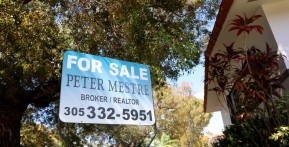Most of the San Francisco residents will find it hard to purchase a home given the rising cost of houses. Based on a study conducted by the California Association of Realtors (C.A.R.), only 10 percent of prospective home owners in the area could afford to buy a single family house.
C.A.R. released their 2nd Quarter Home Affordability report Tuesday, August 11, which indicated that San Franciscans will need an income of $267,780 in order to purchase a house, reports Bloomberg. This translates to a home affordability index of 10 percent, lower than the 12 percent posted during the first quarter of 2015. The median price of homes in the area reached $1.35 million, with monthly payments of $6,690. The monthly payments are based on a 30 year fixed-rate loan and already includes taxes and insurance fees.
The C.A.R. report also showed a drop in California's housing affordability index for the year's second quarter, with only 30 percent of home buyers able to purchase a single family house. This is down 2 percent from the first quarter of 2015 and flat from the same quarter in 2014. The drop is attributed to the rising trend in home prices across various U.S. states.
A separate report released by the National Association of Realtors (NAR) also indicated that four of the most expensive housing markets in the U.S. are located in the California metro area, states Realtor. This is based on NAR's latest quarterly report on Metropolitan Median Area Prices and Affordability. These are San Jose, San Francisco, Anaheim-Santa Ana and San Diego. The price of median single family homes in these areas are at $980,000, $841,600, $685,700 and $547,800, respectively. NAR chief economist, Lawrence Yun, mentioned that the boost in the housing market was fueled by steady rent increases, the slow rise in mortgage rates and stronger local job markets.
Yun added, "While this led to a boost in sales paces not seen since before the downturn, overall supply failed to keep up and pushed prices higher in a majority of metro areas. With home prices and rents continuing to rise and wages showing only modest growth, declining affordability remains a hurdle for renters considering homeownership - especially in higher-priced markets."
Meanwhile, the five lowest-cost metro areas for the second quarter based on the NAR report are Cumberland, Md., Youngstown-Warren-Boardman in Ohio, Elmira in New York, and Rockford and Decatur in Illinois.













